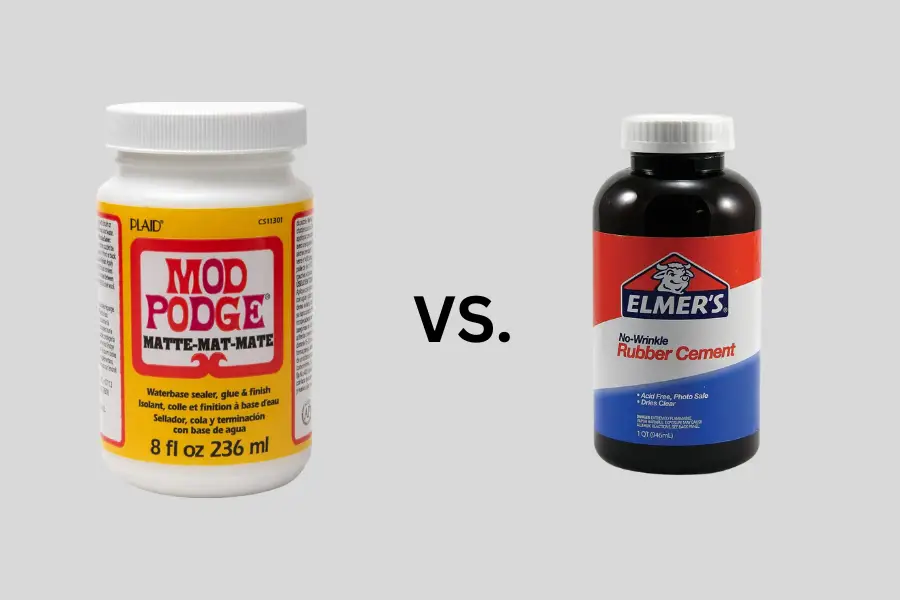Not all glues are created equal, and one might not realize just how many choices there are until you’ve been standing in the craft aisles for way too long. Trying to choose between Mod Podge versus Elmer’s Rubber Cement is just one decision to make.
Both Mod Podge and Elmer’s Rubber Cement glues both have good reputations for keeping your crafts and projects held together smoothly without making a mess or ruining the finished product. You get clear formulas that are easy for both beginners and expert crafters to work with. Of course, both glues have their advantages and disadvantages that might color your opinion.
The nature of your craft will be the main determinant of which glue you pick off the shelf, as will a few key pointers on each glue. You’re not likely to use each type of glue for the same kind of project as they’re created for different purposes.
What Is Mod Podge?
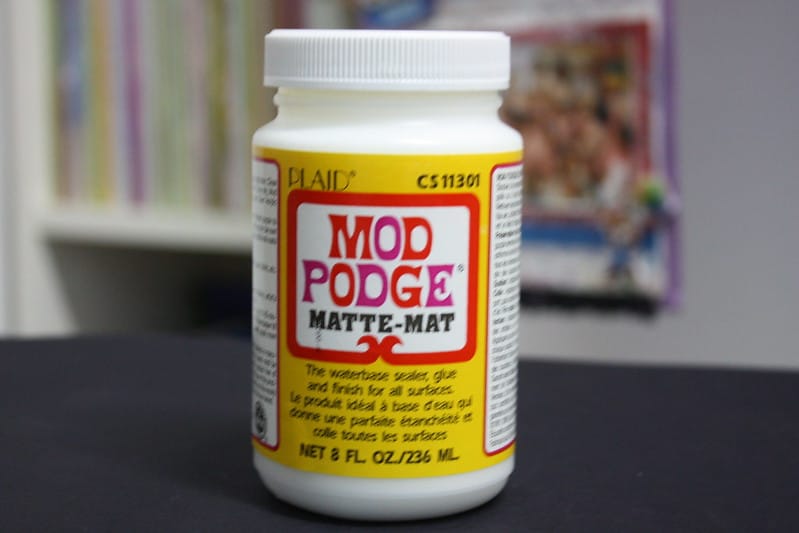
Mod Podge is a PVA glue and is one of the most famous crafting adhesives. It’s easy to use, it comes in multiple forms, and it works. Mod Podge is especially useful for decoupage or layering when you don’t want glue bumps to ruin the consistency or the overall texture of your craft. That said, Mod Podge can also be used to simply glue two things together.

There are seemingly endless formulas available to make Mod Podge work for almost every surface, for indoor and outdoor crafts, and with all kinds of finishes. The Mod Podge that is most similar to Elmer’s Rubber Cement can be brushed onto your surface area of choice, but Elmer’s does have some different capabilities.
What Is Elmer’s Rubber Cement?
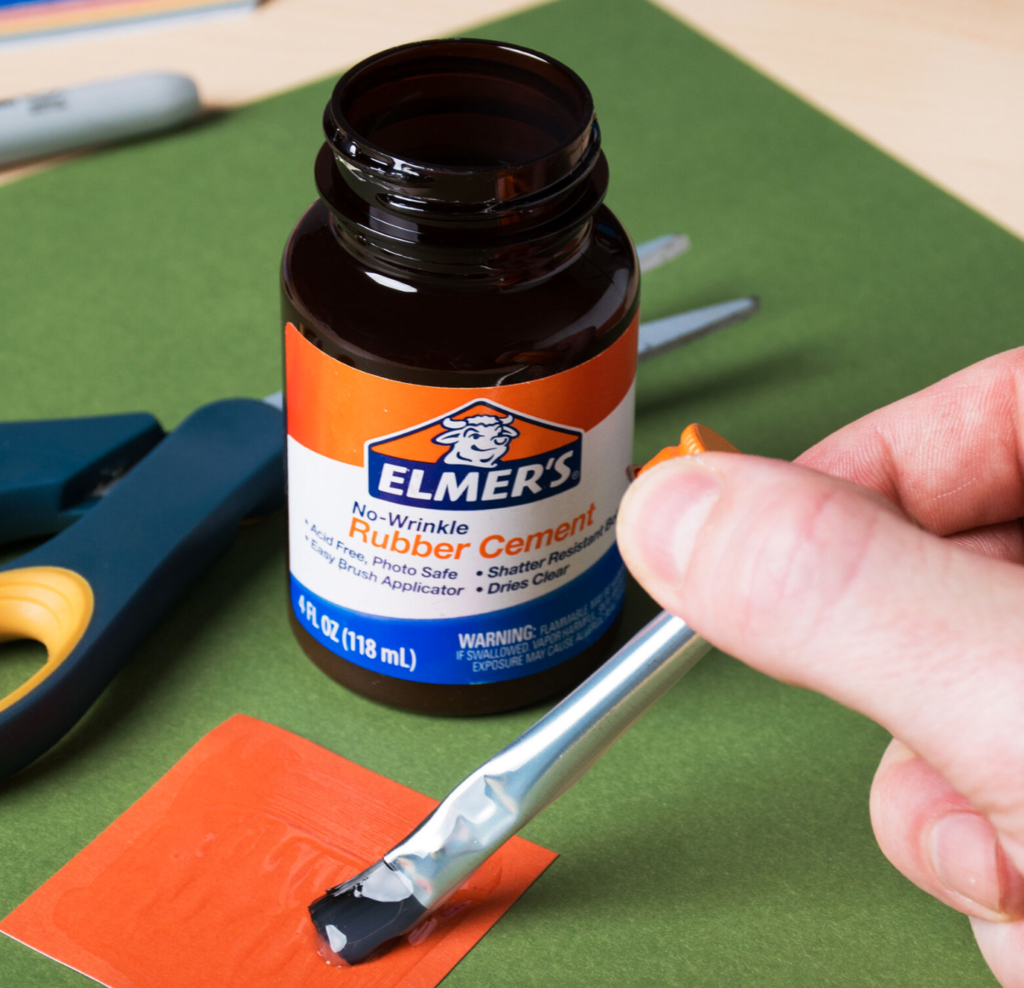
Elmer’s Rubber Cement is a latex solvent and is transparent when dry. This glue is easy to apply and dries with a strong grip and is quite flexible as well. The glue still holds even if you use the glue on a surface that’s bendable. The smell is very strong and Rubber Cement has to be handled with care, so use this glue in a ventilated room.

The great thing about Elmer’s Rubber Cement is that when the glue is dry, it’s like cement in that it keeps its form. That means you’re not going to have to deal with warping or wrinkling that ends up diminishing the quality of your craft. It’s ideal for gluing amongst flat surfaces such as different types of paper, cardstock, or even canvas.
Mod Podge vs. Elmer’s Rubber Cement Comparison
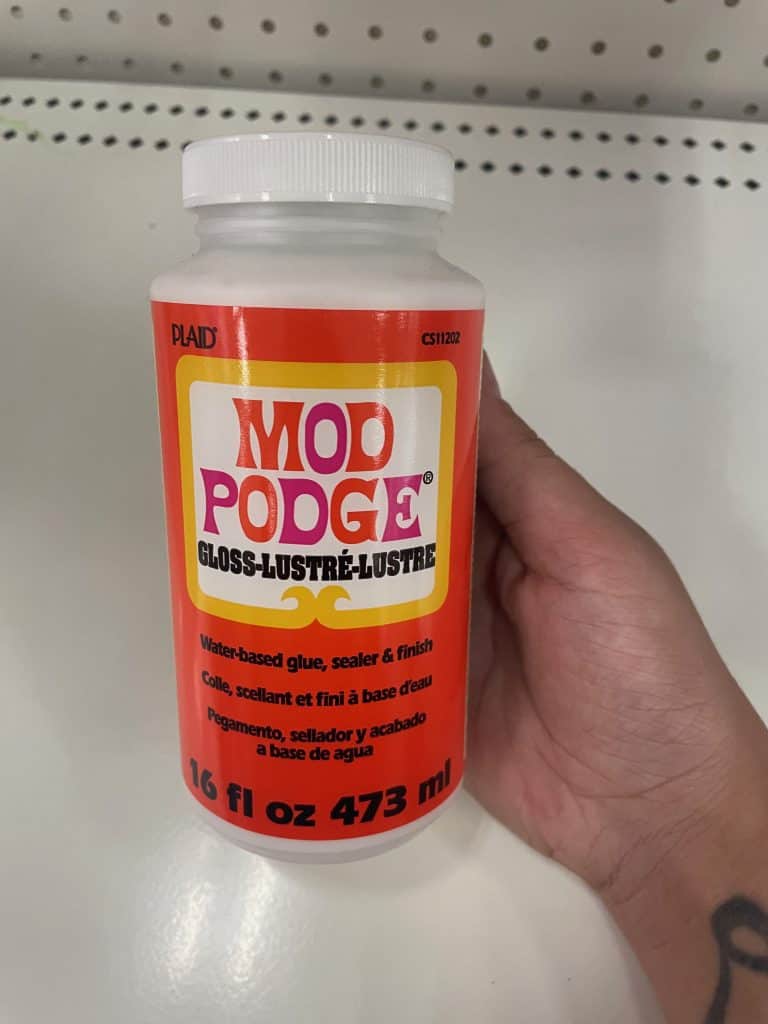
Mod Podge and Elmer’s Rubber Cement are both excellent glues for when you’re looking for a transparent finish. The main difference between these two products is that Rubber Cement isn’t a good option for sealing items. Both products are easy to work with for a variety of projects and if you happen to make a mess, both glues are easy to clean up.
As the name would imply, Rubber Cement is a thicker consistency than Mod Podge. This doesn’t deter from how undetectable both glues are when dry but it may sway your decision about which glue to work with. If you want to dilute Rubber Cement, you can do so with a little bit of water without ruining its efficacy.
In terms of price, a bottle of each type of glue is similar in price. Rubber Cement does come in a much smaller bottle than Mod Podge, but you will typically use much less of it for a standard project. Some forms of Mod Podge are susceptible to yellowing over time especially if your item gets sun exposure, but Rubber Cement doesn’t have this issue.
How Permanent Is Rubber Cement?
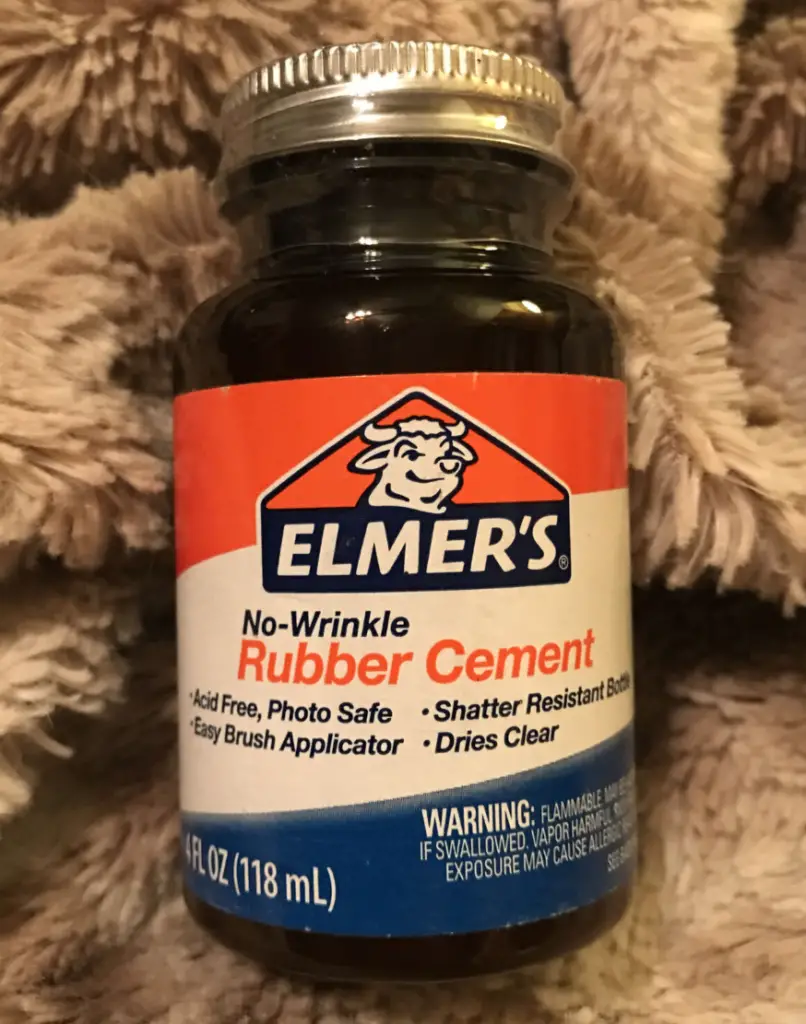
The adhesive capabilities of Elmer’s Rubber Cement is vast, but the nice thing is if you need to take apart what’s been glued together, it’s fairly easy to dissolve and remove the glue without extensive damage to your property. The glue will hold for a very long time.
While Rubber Cement technically isn’t a permanent glue in that you can remove the glue if you want to, this doesn’t mean that the glue doesn’t have a lasting grip. The glued material tends not to budge very much despite being easy to peel off when you want to either change up your project or remove something that has been mounted.
Is Rubber Cement Better Than Mod Podge?
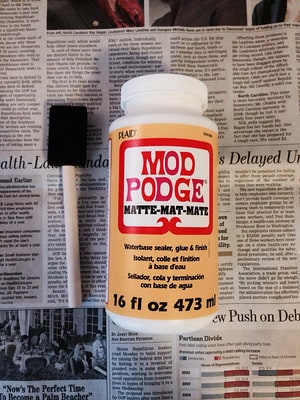
Mod Podge and Rubber Cement are both strong glues that serve their functions very well. Both of these glues hold their own merits and downsides. You get a durable bond with each glue, and you get a glue that dries without any unsightly color. When applied well, both glues can dry without causing any bumps or ripples in your finished product as well.
Mod Podge is known to hold together more types of material with its grip. Mod Podge can either be applied to something before it’s stuck in place or it can be brushed on top of a thin piece of material to seal it in place. The finished product is usually fairly stiff but it’s not entirely non-pliable.
Rubber Cement is a better choice if you’re looking to craft with thinner plastics, paper, or anything that you want to retain some movement or pliability. The formula is able to stay intact even as you twist and bend the item you’ve glued together. It works really nicely if you’re into scrapbooking and card making among other crafts.
Final Thoughts
Mod Podge and Elmer’s Rubber Cement are both winning glues. You’ll notice that each is easy to apply to your desired surface, they both dry beautifully, and they manage to keep a good hold for a long time. Some subtle differences mean that one is better than the other in some circumstances.
Ultimately, if you’re putting something together that you want to retain some movement, Rubber Cement will get the job done. If you want to layer thin materials or you’re hoping to work with a glue that has non-toxic ingredients, you’ll prefer having Mod Podge.
Make sure to follow all my tips and recommended products to ensure your project turns out great! Also, don’t forget to check out my other articles for all your painting Q&A’s. Happy painting!

